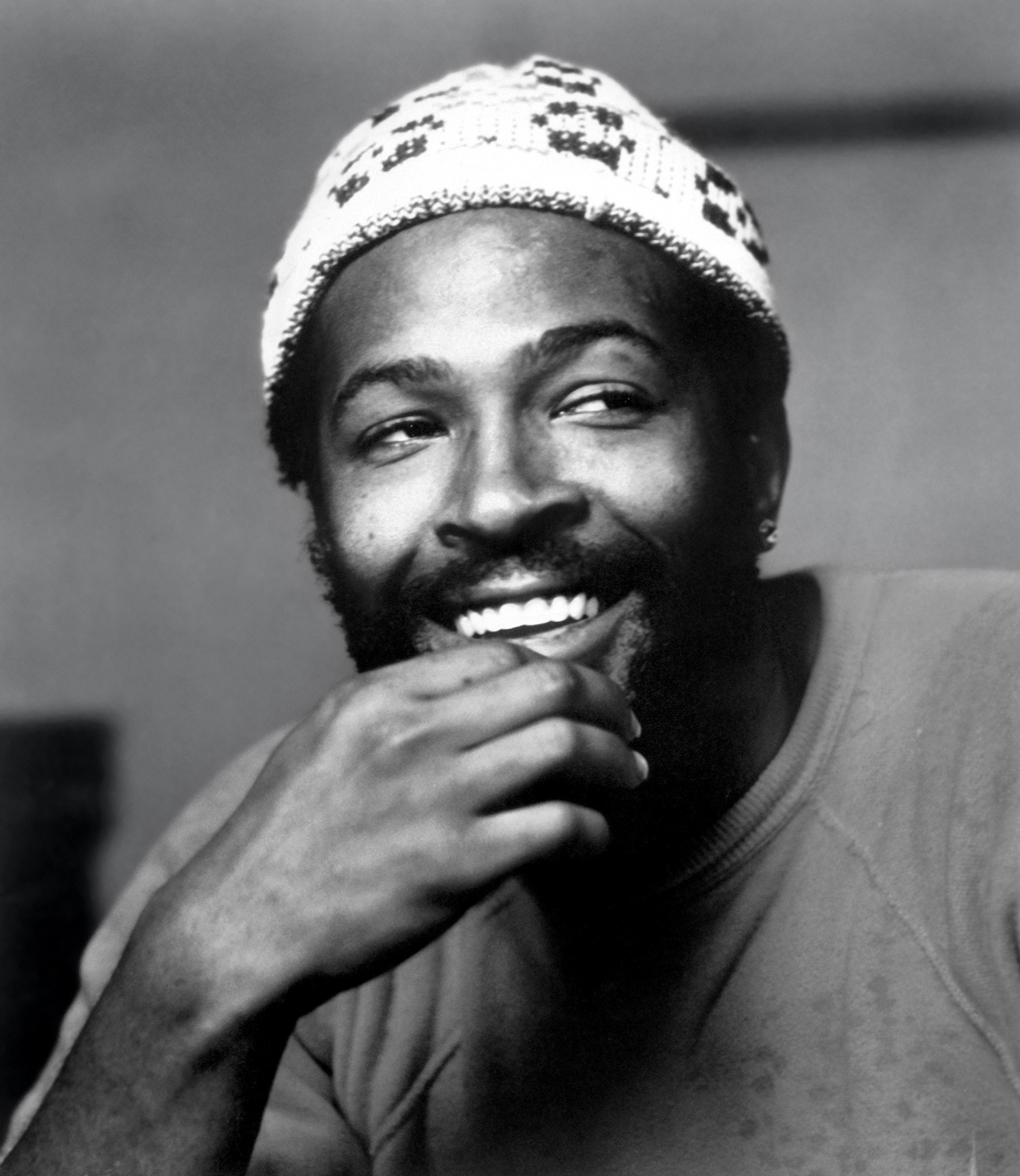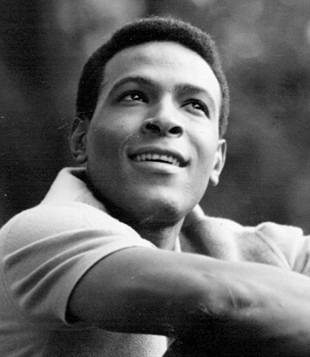Marvin Gaye was an American R&B/soul/funk singer-songwriter and musician who was responsible trailblazing a new sound when he was in Motown Records in the 1960s, as well as his artistic independence helped loosen the reins of other artists.
Gaye achieved his first Motown hit single “Stubborn Kind of Fellow”, which he co-wrote. “Pride and Joy” became his first Top 10 single, and while subsequent singles achieved respectable hits. Gaye found himself at a struggle between his desire to establish his artistic mark and following Motown’s goal to dominate the charts.
He recorded what would turn out to be one of his masterpieces, the LP What’s Going On – a concept album of social and political commentary centering on the Vietnam War. What’s Going On became a huge hit, yielding three Top 10 pop singles “Inner City Blues”, “Mercy Mercy Me” and the title track. The success of the album broke the reins and helped build artistic control for future black artists in particular.
What’s Going On was followed by another concept album Let’s Get It On, which incorporated funk, smooth soul carrying songs about romance and sensual, suggestive lyrics – these established Gaye yet in another persona, as a sex symbol. He made a triumphant return following his exile in Europe (due to tax issues), with “Sexual Healing” (from the album Midnight Love, which was also an astounding success on both R&B and pop album charts) becoming a big crossover hit and eventual Grammy Award winner.
Marvin Gaye tragically died on April 1, 1984, one day before his 45th birthday, as a result of being shot by his father, Marvin Gay Sr. The shooting occurred during a heated argument between the two at their family home in Los Angeles. This tragic incident followed a long period of personal and professional turmoil in Gaye’s life, including struggles with drug addiction, financial difficulties, and mental health issues. Since his death Gaye’s work has been re-evaluated critically, and as years passed he became a soul legend.
Early Life, Career and Motown years
Also known as “The Prince Of Soul” Marvin Gaye was Marvin Pentz Gay Jr. (without the e) on April 2, 1934 in Washington, D.C. His father Marvin Gay Sr. was a preacher and a strict disciplinarian in the household; according to Gaye himself, he would experience regular beatings from his father for any shortcomings the young boy had.
At their local church, Marvin would accompany his father while the latter was doing his service, and Marvin also sang at the church choir. It was music where Marvin found peace and solace outside the cruelty that he was facing in his domestic life. He also learned to play the piano and drums, and soon discovered R&B and doo-wop.
Later on Mavin formed his own group The Marquees, who later performed around the D.C. area; around this time he was starting to write his own songs. His immense vocal talent soon was noticed by Harvey Fuqua, who then started to manage the group and replaced Marvin’s group’s name with the Moonglows, who later became session musicians.
Like other big stars, Marvin started behind the scenes, as a session drummer for Motown stars such as Stevie Wonder and The Supremes. As he was signed to Motown Records (then known as Tamla), Marvin Gay decided to add an e to his surname. His first charting single was “Stubborn Kind of Fellow” which reached #8 on the R&B singles chart and #46 on the pop singles chart in 1962.
Throughout his tenure at Motown during he 1960s, Gaye rose to become one of the label’s most esteemed stars. And whether his performances consisted of solos or duets with female singers such as Diana Ross, Mary Wells and Tammi Terrell, Gaye always brought out the best in them, which resulted in one hit after another. His most celebrated collaboration was with Terrell, who also become his close friend. Gaye and Terrell fleshed out the now-classic hits “Ain’t No Mountain High Enough,” “Your Precious Love,” “If I Could Build My World Around You,” “Ain’t Nothing Like The Real Thing,” and “You’re All I Need To Get By.”
Seeking Artistic Independence
Gaye’s own hits on Motown include: “I’ll Be Doggone,” “Ain’t That Peculiar,” “Too Busy About Thinking My Baby,” “That’s The Way Love Is” and “I Heard It Through The Grapevine,” the last of which had been previously rejected by the legendary Motown founder Berry Gordy. “I Heard It Through The Grapevine” shot to #1 on the Billboard Hot 100 in 1968, and remains one of Gaye’s most well-loved songs.
Despite the success that Gaye was getting as a Motown star, he was otherwise torn between his desire to establish himself as a serious artist and playing to Gordy’s own desire to come up with one guaranteed hit after another. Another tragedy struck when his favorite singing partner and friend Tammi Terrell succumbed to brain cancer in 1970. Gaye was devastated. Because of her untimely death, he withdrew from the limelight and into seclusion, and vowed to himself that he would never again want to be paired with another female artist.
“What’s Going On?”
Inspired by his own experiences of seeing police brutality, as well as the rising political unrest and the Vietnam War, Gaye returned to the studio in June 1970 to record a new song he’d just written “What’s Going On?” Upon hearing of the song, Gordy refused to release it as single, citing its very strong political content.
Despite Gaye and Motown having such disputes over the creative control of the song, in the end “What’s Going On” was released as a single in early 1971. The song became an R&B #1 hit, and #2 hit on the Hot 100 as well. The follow-up single “Mercy Mercy Me (The Ecology),” grabbed the #4 and #1 spots on the pop and R&B singles charts, respectively. Both of those singles belong to the album What’s Going On? which also became a smash, peaking at #6 and #1 on the Billboard 200 and Billboard R&B albums charts, respectively.
What’s Going On was the first of the great R&B/soul concept albums and is now considered one of the landmark albums in pop history. Because of the success of the What’s Going On, Gaye renewed his Motown contract for a lucrative sum. The contract also offered Gaye total artistic control over his recordings.
Following the breakthrough success of the What’s Going On Gaye recorded the soundtrack album for the blaxploitation film Trouble Man. Both the similarly-titled album and single also became a hit, with the latter reaching the Top 10 of both pop and soul singles chart.
“Let’s Get It On”
In 1973, Gaye released another landmark album Let’s Get It On, which carried completely different themes compared to What’s Going On, which were sex, love and spirituality. It even surpassed the success of What’s Going On, netting another #1 position on the R&B album chart and also went to #2 on the pop album chart; the album’s title track went to #1 on both pop and R&B singles charts. The success of the Let’s Get It On cemented Gaye’s crossover appearance once more.
Because of his recent commercial and critical triumphs, Gaye embarked on his first tour in four years. It culminated with his performance in London, which was recorded and released as a live album titled Marvin Gaye Live At The London Palladium whose single “Got To Give It Up” went to #1 on all pop, dance and R&B singles charts in 1977. He again teamed up with Diana Ross for the last time, together with her own group The Miracles. In 1973 they produced one more final project together, Diana & Marvin which was released to international acclaim. Gaye released two final albums with Motown, I Want You (1976) and Here, My Dear (1978). Here, My Dear, despite its title, actually recounted Gaye’s failed marriage to Anna Gordy. It was greeted with positive reviews, although it was a commercial flop.
Gaye’s outstanding tax problems were also a big concern for him, and these made it harder for him to focus on his music. He went into a European exile in 1981, and shied away from the limelight for quite a long time. Gaye made a triumphant return in 1982 with the release of Midnight Love, which helped Gaye’s successful comeback. But it also was to be, sadly, his last album.
Last years, Death and Legacy
Midnight Love‘s single “Sexual Healing” became a hit, peaking at #3 on the Billboard Hot 100 and #1 on the R&B singles charts that year. It has also become one of Gaye’s classic songs.
Despite his triumphant return to the music scene, Gaye still was having problems with drugs and depression. Gaye moved into his parent’s house, and from there his fights with his father had become more frequent, more physical and more violent.
In 1984, a day before his birthday, Gaye was shot and killed by his own father following one of their too many serious fights. Upon his arrest, Gaye’s father stated that he did it in self-defense, but in the end he was charged with manslaughter. Marvin Gaye was 44 years old.
Marvin Gaye’s death triggered an overwhelming outpouring of grief from his fans. His body of work has been re-evaluated, and now praised more widely than ever. His quest for artistic freedom had loosened the reins of studio production in Motown, inspiring more artists such as Stevie Wonder and Michael Jackson to follow their artistic and musical freedom.
He has achieved numerous awards such as a posthumous induction to the Rock and Roll Hall Of Fame, three years after his death. His albums What’s Going On, Let’s Get It On, Here, My Dear and Midnight Love have been included on many lists of best albums of all time by various music publications such as Rolling Stone and NME. Marvin Gaye had successfully transformed his observations, and most of all hardships and tragedies in life, into inspirations to create beautiful works of art. Those are the masterpieces of a musical legend indeed.


